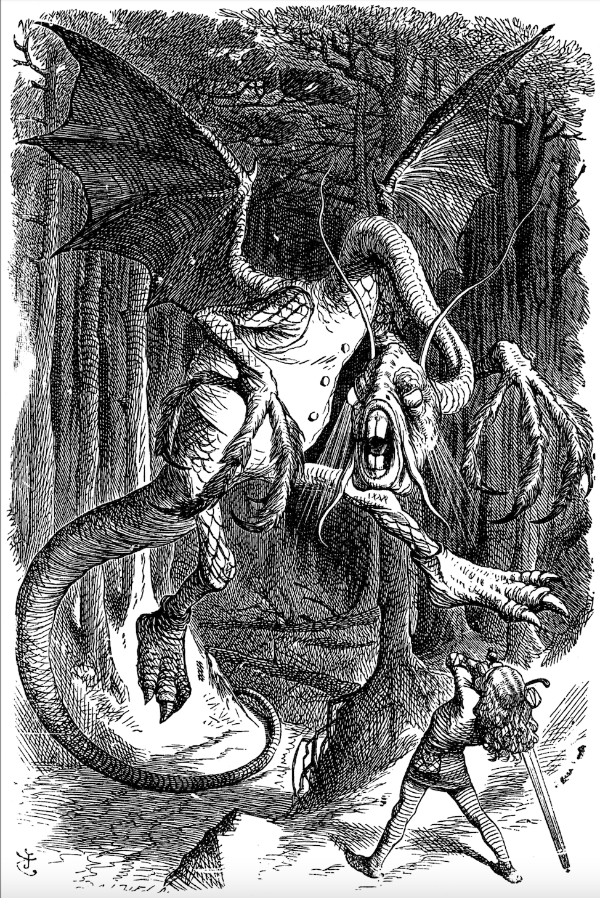Teach This Poem, though developed with a classroom in mind, can be easily adapted for remote-learning, hybrid-learning models, or in-person classes. Please see our suggestions for how to adapt this lesson for remote or blended learning. We have also noted suggestions when applicable and will continue to add to these suggestions online.
The following activities and questions are designed to help your students use their noticing skills to move through the poem and develop their thinking about its meaning with confidence, using what they’ve noticed as evidence for their interpretations. Read more about the framework upon which these activities are based.
- Warm-up: Look closely at the “The Jabberwock” illustration. What do you notice? What stands out to you in the illustration? Look again. What else do you see? What questions do you have?
- Before Reading the Poem: Watch this video of Ella Fitzgerald and Mel Torme scatting. As you watch, pay special attention to the sounds that you hear. What do you notice?
- Reading the Poem: Now, silently read the poem “Jabberwocky” by Lewis Carroll. What do you notice about the poem? Note any words or phrases that stand out to you or any questions you might have.
- Listening to the Poem (Enlist two volunteers to read the poem aloud): Listen as the poem is read aloud twice, and write down any additional words and phrases that stand out to you. (Teachers, your students might enjoy watching this animated video of the poem. As students watch, have them circle/highlight words that feel like nonsense words.)
- Small-group Discussion: Share what you noticed about the poem with a small group of students. Based on the details you just shared with your small group and the resources from the beginning of class, what nonsense words did you notice? How do these words impact your reading of the poem? Do you use any words that others might not consider to be nonsense?
- Whole-class Discussion: Many people believe that this poem is a nonsense poem. Do you agree/disagree? Why?
- Extension for Grades 7-8: Today, you will participate in an exquisite corpse writing activity. Start by taking out a sheet of paper and something to write with. Then, write just one sentence. Pass your paper to a classmate. Your classmate will write the next line, and then fold the paper to only reveal their new line. Your classmate will then pass the paper. The next classmate will add another line, and then they will only show their new line. Continue passing papers until the original author receives their paper. Without looking at the rest of the lines, write the final line. When your teacher tells you, unfold your paper and read your poem. Does it make sense? How did your poem change as it passed from person to person? Share your poem and your thoughts with your classmates. How might your poem relate to “Jabberwocky?”
- Extension for Grades 9-12: Write another version of this poem from the point of view of the Jabberwock. Share your poem with your classmates.
“Some say the poem ‘Jabberwocky’ by Lewis Carroll is a nonsense poem, which implies the poem is meaningless, but I believe it tells a fantastical story that students may enjoy. The poem could also be used to illustrate the importance of word choice and defining words using context clues, word stems, and prefixes.” Find more information and classroom activities with this article from the Library of Congress.

